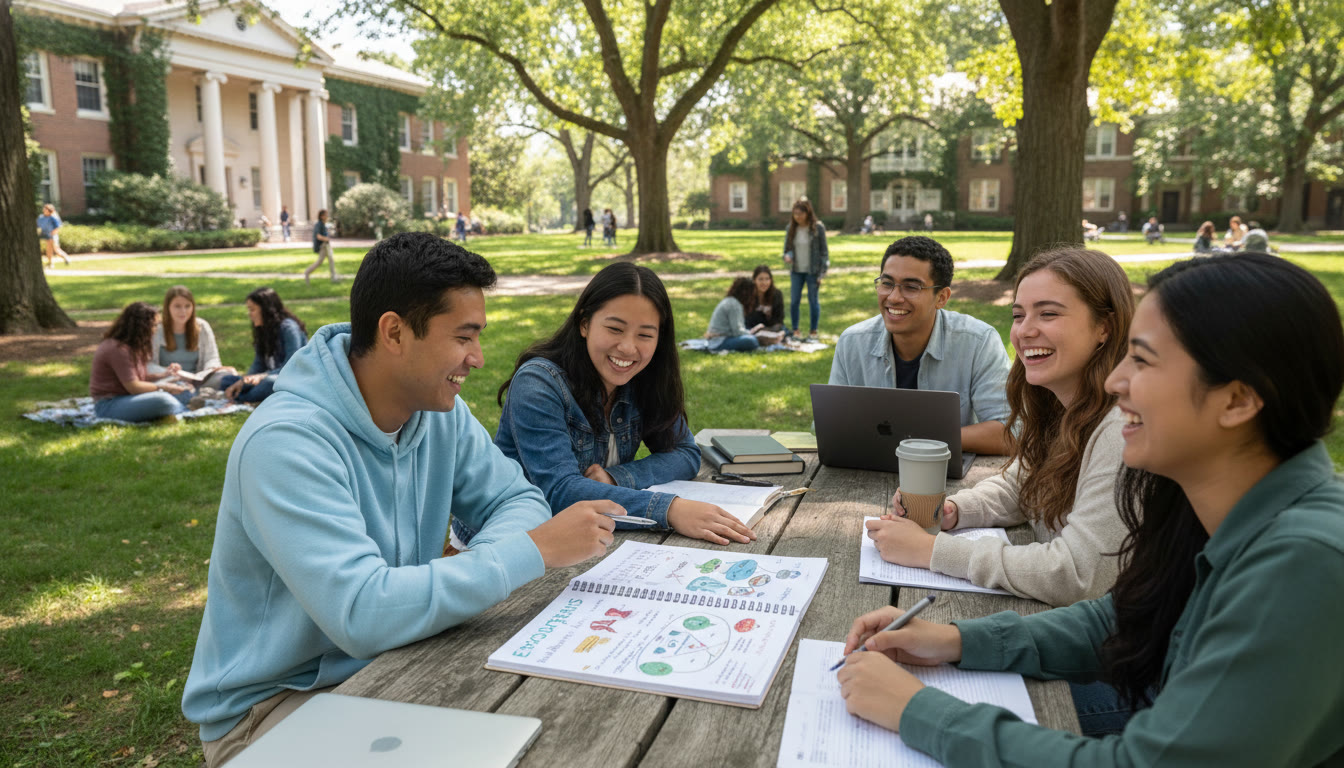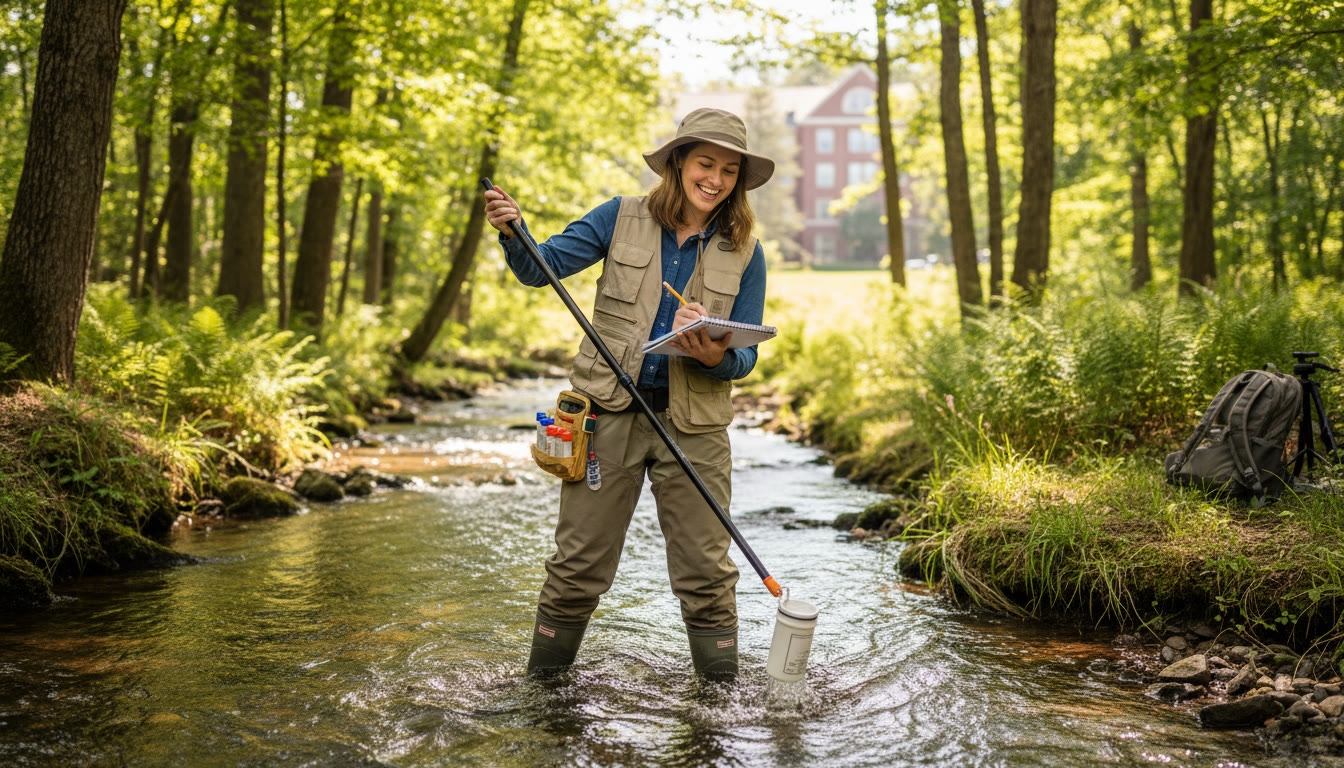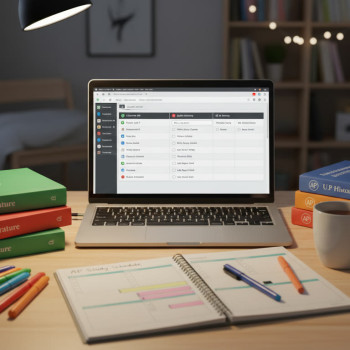Why This Guide Matters: AP Environmental Science, Colby, and Your Next Step
If you or your student is passionate about the natural world, climate change, conservation, and human-environment systems, the intersection of AP Environmental Science (APES) and an Environmental Studies path at colleges like Colby can be an exciting roadmap. This guide is written for students and parents who want clear, friendly, and practical advice — not jargon. Think of it as a conversation over coffee with a coach who’s seen lots of students turn curiosity into competitive college applications and meaningful academic pathways.

Who this guide is for
- High school students taking or planning AP Environmental Science.
- Students considering Environmental Studies or a related major at selective liberal arts colleges like Colby.
- Parents who want concrete ways to support study plans, applications, and meaningful extracurriculars.
AP Environmental Science: What It Is and Why It Helps
AP Environmental Science is a college-level high school course that blends Earth science, biology, chemistry, and social studies with a strong focus on real-world problems: ecosystems, energy, pollution, climate, and resource management. Even if you don’t pursue environmental studies in college, skills you build in APES — data interpretation, synthesis, lab methods, and written argument — are universally valuable.
How APES strengthens a college application
- Signals rigor: Colleges like to see students tackling challenging, interdisciplinary coursework.
- Demonstrates passion: Sustained interest in environmental topics through APES + extracurriculars tells a cohesive story.
- Builds skills: Lab work, data analysis, and scientific writing are useful in research or internship applications.
Thinking About Colby (or Similar Liberal Arts Colleges)
Colby is known for strong undergraduate emphasis, opportunities for student research, and an environment that supports interdisciplinary learning — all of which align well with Environmental Studies. If you’re aiming for Colby or similar schools, you want to show intellectual curiosity, readiness for rigorous coursework, and meaningful engagement beyond the classroom.
Academic and extracurricular signals that resonate
- High-level coursework (APES plus other APs or honors classes in science/math/English).
- Research projects, independent studies, or science fair projects related to environment or sustainability.
- Sustained community involvement: conservation clubs, park cleanups, citizen science contributions.
- Summer programs, internships, or volunteer experience tied to ecology, policy, or outdoor field work.
Practical Study Plan for AP Environmental Science (Semester-By-Semester)
Below is a practical, flexible plan you can adapt. It balances content mastery, test strategy, and portfolio-building (projects and activities that will help your college application).
| Timeframe | Focus | Concrete Actions |
|---|---|---|
| Start of Course (Weeks 1–4) | Foundations: systems, energy, and ecology |
|
| Midterm Phase (Months 2–4) | Data skills, chemistry of the environment, and human impacts |
|
| Pre-Exam (Last 6–8 Weeks) | Exam strategies, timed practice, and content review |
|
| After the Exam | Portfolio polish, letters of recommendation, and next-level opportunities |
|
Study Habits That Actually Work (Not the Usual Advice)
Studying smarter is about focus, feedback, and iteration. Here are actionable techniques that students often skip:
1. Active note synthesis
After each class, spend 10–15 minutes rewriting your notes into a ‘one-page summary’ that answers: What’s the central idea? What data supports it? What questions remain?
2. Concept maps for systems thinking
APES is full of systems (food webs, biogeochemical cycles). Draw concept maps that show flows and feedbacks — they make cause-effect questions easier and stick in your memory.
3. Practice writing, not just multiple choice
The AP free-response section rewards clear, structured explanations. Practice writing brief scientific arguments: claim, evidence, reasoning. Time your responses.
4. Turn labs into stories
Lab reports shouldn’t be checklists. Treat each experiment as a narrative: what problem did you test, what did you expect, what happened, and why it matters? That makes it easier to recall during the exam and in recommendations.
Building a Compelling Application Narrative: From APES to Colby
Admission offices love a coherent story. If you’re listing APES on your transcript, tie it to meaningful projects and leadership. Here’s how to craft that narrative.
Step 1: Choose a focus
Your focus might be field ecology, environmental policy, sustainable design, or climate modeling. You don’t need to lock into a single path forever — just choose a thread that connects coursework, activities, and summer choices.
Step 2: Show progression
Admissions readers look for growth. Show how APES led to a project, which led to a leadership role or research interest. Concrete examples beat vague lists.
Step 3: Use the AP experience in essays and interviews
Reflect on a moment in your APES class that shifted your perspective — a field trip, a lab surprise, or a debate about policy. That anecdote can make essays personal and persuasive.
Extracurriculars That Strengthen an Environmental Studies Application
Depth matters more than breadth. It’s better to have sustained impact in a few relevant areas than superficial involvement in many.
- Long-term volunteer or employee roles at parks, nature centers, or conservation NGOs.
- Independent research projects or science-fair entries tied to environmental questions.
- Leadership in school environmental clubs, community organizing for local sustainability initiatives.
- Sample-building experiences: GIS mapping, citizen science (e.g., biodiversity monitoring), community science apps.
How to Use AP Scores Strategically
AP scores can serve multiple purposes: college credit, demonstrating mastery, or strengthening subject preparedness. If you earn a strong APES score, think about how to reflect that in your application materials. If a school (like Colby) offers credit or placement, that can allow you to jump into advanced electives or research early.
Important considerations
- Don’t rely solely on AP credit — many selective colleges emphasize the learning over credit transfer.
- Use AP success to justify advanced, college-level coursework in essays and discussions with admissions counselors.
Sample Timeline: Junior to Senior Year
This timeline helps you align AP prep, college planning, and experiences so nothing feels rushed.
| Month | Junior Year | Senior Year |
|---|---|---|
| Aug–Oct | Start APES if offered; join environmental club; map out test dates. | Finalize college list; draft supplemental essays that reference APES project or insights. |
| Nov–Jan | Take practice exams; start independent project or research proposal. | Submit early applications if applicable; continue research or internships. |
| Feb–Apr | Refine lab skills; practice free-response; take AP exam in May. | Write thank-you notes to recommenders; prepare for campus visits or interviews. |
| May–Jun | Wrap up projects; create a one-page portfolio summary for applications. | Decide on college; plan first-year courses. |
Tips for Parents: How to Support Without Taking Over
Parents play a huge role in emotional and logistical support. Here’s how to be helpful without leading the project.
- Be a study-space architect: create a quiet, predictable zone for focused work.
- Encourage ownership: let your student set study goals and reflect on results.
- Offer pragmatic help: transportation to internships, help scheduling, or proofreading essays — offer, don’t control.
What Colleges Look For in Environmental Studies Applicants
Selective liberal arts colleges seek students who combine curiosity with evidence of initiative. Here are the attributes that stand out:
- Interdisciplinary thinking — ability to connect science to policy, ethics, and community impact.
- Hands-on experience — fieldwork, labs, or applied projects.
- Leadership in community problem-solving — starting or sustaining programs that address local issues.
- Clear motivation — personal essays or interviews that demonstrate why the environment matters to the applicant.
How Tutoring and Coaching Can Help (Including When Sparkl Fits In)
One-on-one guidance can accelerate learning and reduce stress — especially when it’s tailored. Tutors help clarify concepts, coach free-response writing, and design practice exams. Personalized plans can identify weak areas (data interpretation, conceptual gaps) and turn them into strengths.
For students who benefit from targeted, structured support, Sparkl’s personalized tutoring offers tailored study plans, expert tutors familiar with APES expectations, and AI-driven insights that help focus practice where it’s most effective. When integrated with a student’s independent projects and essays, that kind of support can translate to more confident classroom performance and stronger application materials.
Practice Resources and How to Use Them (Without Feeling Overwhelmed)
Less is more if practice is deliberate. Select a few high-quality resources and commit to mastering them.
- Official AP practice questions for timed practice (simulate testing conditions).
- Peer-reviewed articles or accessible science journalism for real-world context.
- Local labs or university outreach programs for hands-on experiences.
Sample AP Free-Response Strategy (Quick Checklist)
When you sit down to write a free-response answer, use this internal checklist:
- Restate the question as a clear claim.
- Present evidence (data, theory, or lab observations).
- Explain reasoning: connect evidence to the claim with explicit logic.
- Include caveats or limitations when appropriate — exam graders like nuance.
- Conclude with a concise implication or broader connection.
Real-World Example: Turning a Class Project Into an Application Asset
Meet a hypothetical student, Maya. In APES she designed a small water-quality study of a local stream. Instead of filing the data away, she:
- Turned her lab notebook into a 2–3 page project summary with methods, results, and community implications.
- Presented findings at a school environmental club meeting and proposed a cleanup day.
- Mentioned the project in her college essay as the moment she connected scientific observation to community action.
This progression — classwork → initiative → community impact → essay reflection — is exactly the narrative arc colleges respond to.
Balancing Passion and Practicality: Majors, Careers, and Flexibility
Environmental Studies is inherently interdisciplinary. Many students combine it with related areas: economics, public policy, computer science (for modeling), or art/design (for communication and visualization). Be open-minded: the first year of college is a chance to sample advanced classes, meet faculty, and refine your niche.
Career paths commonly linked to Environmental Studies
- Environmental research and field science
- Environmental policy and advocacy
- Sustainability in business and urban planning
- Education, outreach, and communications
Final Checklist Before the AP Exam and College Applications
- Complete and polish independent project materials — lab notebook, summary, and visuals.
- Ask teachers for recommendations while details are fresh; provide a one-page resume of activities.
- Finish practice AP exams and review incorrect answers for conceptual gaps.
- Prepare concise anecdotes linking APES work to your broader interests for essays and interviews.
- Consider targeted tutoring or coaching for focused areas — 1-on-1 support can make a measurable difference in confidence and scores.

Closing Thoughts: Curiosity, Consistency, and Craft
AP Environmental Science and a path toward Environmental Studies at a school like Colby are both about more than credentials — they’re about cultivating a way of seeing the world. Curiosity will get you started, but consistency turns curiosity into skill, and craft (how you communicate and present your work) makes your application sing.
Be patient with the process. Build the arc: rigorous coursework, meaningful projects, thoughtful reflection, and clear communication. If you ever feel stuck, targeted support — whether a teacher, mentor, or personalized tutoring — can help you refine focus and keep momentum. Programs that offer 1-on-1 guidance, tailored study plans, and expert tutors can be particularly useful when a student is balancing AP rigor with college planning.
Remember: the best applications tell honest stories. Use APES as a laboratory for your ideas — both scientific and personal — and let that work shape the narrative you present to colleges. The combination of strong AP preparation, intentional extracurriculars, and clear reflection is a pathway not only to admissions success but to a fulfilling academic journey.
Ready to take the next step?
Start small: schedule your study blocks for the next two weeks, draft a one-page summary of any current lab work, and identify one community opportunity to apply your learning. Keep notes, iterate, and celebrate small wins — they add up faster than you think.
Good luck — and enjoy the journey. The planet needs thoughtful, curious students like you.
























No Comments
Leave a comment Cancel